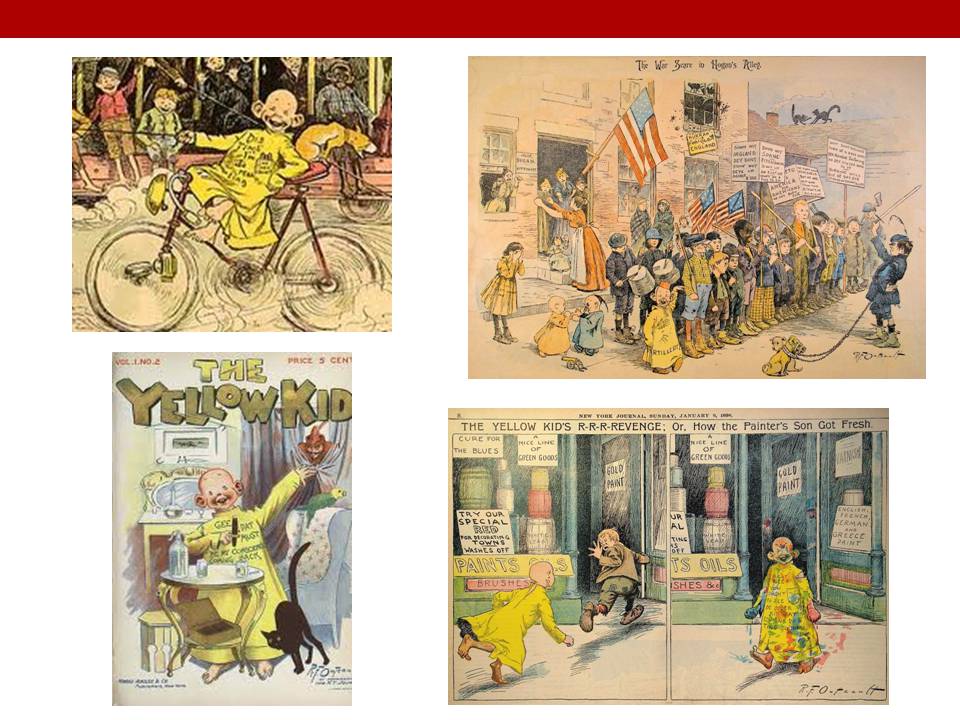- Головна
- Готові шкільні презентації
- Презентація на тему «The History of American Press»
Презентація на тему «The History of American Press»
397
Слайд #1
The History of American Press

Слайд #2
America`s history is inseparable from the history of its journalism. The history of newspapers has always been a combinations of events and people.An early ancestor of the newspaper dates back to 60 B.C.,when Julius Caesar posted the handwritten «Acta Diurna»(Day`s Events) in the Forum and sent copies to military leaders. Real newspapers appeared in the Western world in the 17th century.

Слайд #3
The first newspaper in the colonies, «Public Occurreces», was published in Boston in 1690 by Benjamin Harris. This newspaper was printed on three sheets of stationery-size paper and the fourth page was left blank so that readers could add their own news before passing it on to someone else.

Слайд #4
Journalists, for the most part, simply stayed out of trouble by printing innocuous coverage or even giving government officials the chance to approve material before publication. Things changed somewhat when James Franklin, brother of Benjamin, established the New England Courant in 1721.

Слайд #5
Perhaps the most famous name in early American journalism is that of Peter Zenger. Publisher of the New York Weekly Journal, Zenger was charged with sedition after his paper had criticized colonial authorities, and he was tried for libel against the colonial British government in 1735. In this picture, Zenger is arrested and his printing press is burned by Colonial authorities.

Слайд #6
Zenger was found innocent with the help of noted attorney Andrew Hamilton, and this verdict was that one verdict that paved the way for a free and independent press in America. For the first time it was considered proper for the press to question and criticize the government. This is a pillar of a free press in the United States and any country that is free. Journalists have to be able to question the actions of the government in order to make them accountable.

Слайд #7
By 1775, when the revolution began, 37 newspapers were being published.These newspapers generally allied themselves with the patriots.In fact, some historians beliave there would not have been a revolution without the support of the press.

Слайд #8
By the 1820s, about 25 daily newspapers and more than 400 weeklies were being published in the USA. Two media giants began building their newspaper empires after the American Civil War (1861-1865).
Joseph Pulitzer
William Randolph Hearst
Joseph Pulitzer
William Randolph Hearst

Слайд #9
By the 1820s, about 25 daily newspapers and more than 400 weeklies were being published in the USA. Two media giants began building their newspaper empires after the American Civil War (1861-1865).
Joseph Pulitzer
William Randolph Hearst
Joseph Pulitzer
William Randolph Hearst

Слайд #10
After William Randolph Hearst moved to New York, he and Joseph Pulitzer competed for readers by making their papers more and more sensational.

Слайд #11
To increase circulation both started to include articles about the Cuban Insurrection. Many stories in both newspaper greatly exaggerated their claims to make the stories more sensational.
The American public purchased more newspapers because of the sensational writing, and this strongly encouraged Hearst and Pulitzer's newspapers to write more sensationalized stories.
The American public purchased more newspapers because of the sensational writing, and this strongly encouraged Hearst and Pulitzer's newspapers to write more sensationalized stories.

Слайд #12
«Yellow journalism»
«Yellow journalism» derives from the name of Yellow Kid, a cartoon character that appeared at that time.
Yellow Kid cartoonist Richard Outcault
«Yellow journalism» derives from the name of Yellow Kid, a cartoon character that appeared at that time.
Yellow Kid cartoonist Richard Outcault

Слайд #13
«Yellow journalism»
«Yellow journalism» derives from the name of Yellow Kid, a cartoon character that appeared at that time.
Yellow Kid cartoonist Richard Outcault
«Yellow journalism» derives from the name of Yellow Kid, a cartoon character that appeared at that time.
Yellow Kid cartoonist Richard Outcault

Слайд #14
